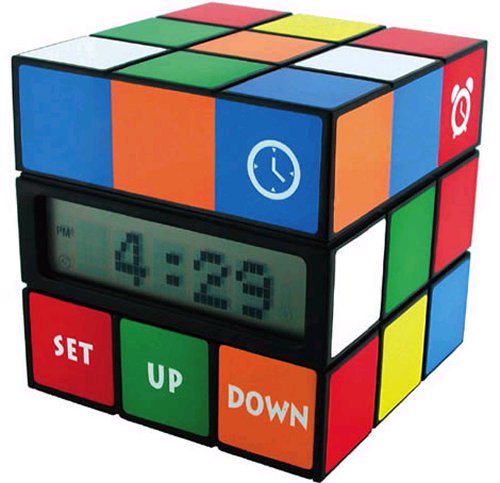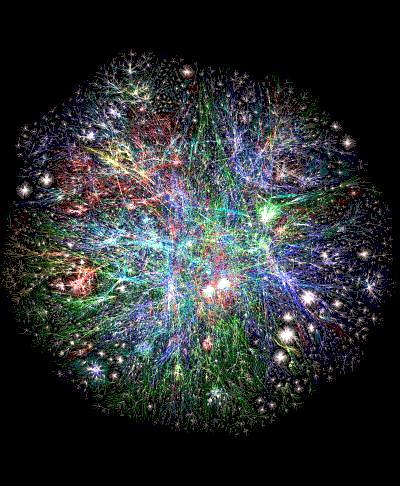 |
| Rubik's Cube Alarm Clock |
As a Texas teacher my curriculum is defined by the Texas Essential Knowledge
and Skills (TEKS). There is a set
for physics and a set for scientific research and design (SRD). Every lesson is
driven by these standards. The National Association of Science Teachers has
another set of standards for physics and SRD as part of their Next
Generation Science Standards (NGSS). Even though science is not currently part
of the Common Core Standards (CSS)
and Texas will probably not adopt the standards, they cannot be dismissed as students
may plan to leave Texas for universities and employment. Through my course
work, I have recently been introduced to yet another set of learning standards,
The
National Educational Standards for Students (NETS-S) developed by the
International Society for Technology Education (ISTE). I appreciate all of
these groups helping me know what students should be accomplishing during class
time. Their guidance is welcome but overwhelming when the volume of standards
is compared to the available class time. Focusing on the NETS-S, when examining
the class activities that already exist and meet the TEKS, I find that in many
lessons the NETS-S are already being met, or can be met by including web 2.0 tools to the lesson.
One standard addresses student creativity, critical thinking
and problem solving (NETS-S, 2007). The
creativity of thought includes the use of models and simulations to solve
problems. For physics students the free Phet
site gives students the opportunity to perform virtual inquiry labs that would
not be possible in the classroom due to size, cost or danger. The Physics Classroom also
offers a wide range of simulations that students can explore to gain
understanding regarding difficult concepts. A web search for simulations will
produce a long list of site to explore.
 |
| 3D Map of the World Wide Web |
The requirement for students to communicate, collaborate, conduct
research and use creativity can be addressed with a number of web tools
(NETS-S, 2007). Web 2.0 tools such as showme.com (for Apple products) or the many
options available through Google documents can
be used to communicate results from an experiment. Currently in SRD, some students
have chosen to track and share their learning for a year-long project in blogs.
Additionally, Google documents offers easy collaboration tools by allowing
document sharing, comments, voice comments and chats. Students should be
encouraged to go beyond Wikipedia and use sites such as Encyclopedia Britannica and other
encyclopedias which are also available online for research. Additional sources
are available through schools and local libraries. Collaborative research can
be collected in sites such as diigo.com. Students
share results and show their creativity with larger projects using tools such
as prezi.com or voicethread.com. It takes some creativity on
the part of the teacher to move the products of science lessons beyond data
tables, graphs and conclusions written on paper, but the tools are available
for those who are willing.
The standards of good digital citizenship and correct
technology can be taught and modeled in any lesson that includes technology
(NETS-S, 2007). Expectations for the use of technology in the classroom must be
clear to the students. The difference between their informal use and the formal
use should be explained as the same tool may be used by the student in a
different setting. Modeling these standards in the lessons they create will
help student understand digital citizenship and how to correctly use the
technology tools they are learning.
There are plenty
of web tools available for students to create, problem solve, collaborate and
learn. Teacher creativity and knowledge as well as the availability of reliable,
connected computers in the classroom make the difference in the ability to
incorporate the NETS-S on a daily basis. Blocked sites and internet safety are
an additional concern when introducing students to the learning opportunities
available on the World Wide Web. All things considered, I am happy to discover that overall the standards in NETS-S
can be met in my classroom along with the course TEKS for physics and SRD.
Texas Essential
Knowledge and Skills (2013). Retrieved October 6, 2103 from http://www.tea.state.tx.us/index2.aspx?id=6148
High School
Physical. Science Next Generation Science
Standards (April 2013). Retrieved October 6, 2013 from http://nstahosted.org/pdfs/ngss/20130509/dci-grouped/HS-PhysicalScienceStandards.pdf
Common Core State
Standards Initiative (2012). Retrieved October 6, 2013 from http://www.corestandards.org/
NETS for Students
2007 (2007). Retrieved October 6, 2013 from http://www.iste.org/standards/nets-for-students/nets-student-standards-2007
Laughead,
G. (2009, February 25). 3D Map of the World Wide Web Retrieved October 6, 2013
from http://www.vlib.us/web/worldwideweb3d.html
Great observation: NETS Standards do not need to be -- and should not be -- an add-on in terms of additional learning tasks and use of precious class time. Instead, these can readily be met by incorporating Web 2.0 tools and other technologies in the normal curriculum process.
ReplyDelete